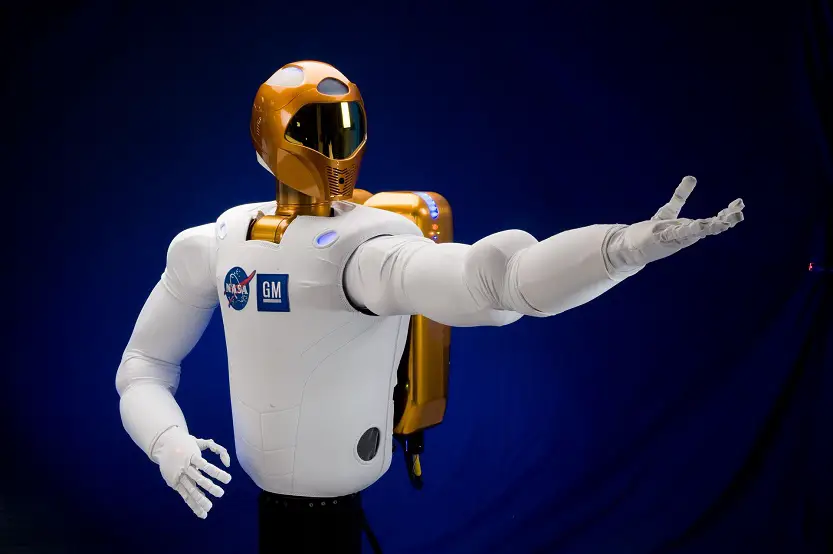If you’re looking for the best books on robotics engineering then you’ve come to the right place. The books in this list are used by the top colleges and universities to teach engineering students about mechanical design principles and the fundamentals of robotics.
Best Books on Robotics Engineering
Introduction to Robotics: Mechanics and Control (4th Edition)
Introduction to Robotics: Mechanics and Control (Buy Online) is written by John J. Craig, and this book stands as one of the most popular university textbooks on robotics. This textbook has a long history with the first edition being published in 1986, and the fourth edition was released in 2017 with all new material to keep pace with the rapidly evolving field of robotics.
This book starts with some of the basic background material you’ll need to understand the fundamental ideas and concepts of robotics. Then it moves quickly into the mathematics used to describe the position of a robot in a three-dimensional coordinate system.
Then after you master the basics in the early chapters you’ll start to delve into forward and inverse kinematics. This will be the primary focus of the book where you’ll learn how to plan the motions of a robot and control its dynamics.
Then the final chapters will go into more detail on linear control and robotics programming. There are also a number of programming examples in this book that use the MATLAB (Learn More) programming language.
Mechatronics: Electronic Control Systems in Mechanical and Electrical Engineering (6th Edition)
Mechatronics: Electronic Control Systems in Mechanical and Electrical Engineering (Buy Online) is written by Bill Bolton who formerly served as a consultant at BTEC. He also spent many years working for UNESCO, and he has published a number of engineering textbooks on robotics and industrial control systems.
This book covers everything you’ll need to know to get a complete understanding of a robot’s physical systems and its electronics. It starts out with a basic introduction to mechatronic systems and all the tools and techniques that go into the design process.
This book goes over in detail all the fundamental knowledge you’ll need to learn in order to master the field of mechatronics and robotics. In the early chapters, you’ll learn about sensors, signals, and actuation systems so you can get a better understanding of the underlying hardware that makes up a complex robotic control system.
The later chapters in this book deal with programming and communication systems. In these chapters, you’ll learn how to program a microcontroller using assembly language and the C programming language. You’ll also learn more advanced control techniques later on in this book, and there is even a chapter in this book that covers the basics of artificial intelligence and machine learning.
Modern Robotics: Mechanics, Planning, and Control
Modern Robotics: Mechanics, Planning, and Control (Buy Online) is written by Kevin M. Lynch and Frank C. Park. Kevin M. Lynch has a Ph. D. in robotics from Carnegie Mellon University and his research is primarily focused on dynamics and motion control systems.
Frank C. Park has a BS in electrical engineering from MIT and a Ph.D. in applied mathematics from Harvard University. Frank C. Park also serves as a professor at Seoul National University where he teaches mathematics and robotics.
This book even has a companion video course Robot Mechanics, Planning, and Control (View Online Course) if you want to get a more in-depth understanding of the material.
This book starts by going over rigid body motions and forward kinematics. Then it goes into inverse kinematics in both closed chain and open chain robotics systems.
Then after you learn the basics in the early part of this book you’ll learn more about trajectories and motion planning. The book then goes into more detail about robot arms and how to control their manipulator in a three-dimensional environment. There is even a short chapter at the end of this book that goes over mobile robotic control systems.
Robot Modeling and Control
Robot Modeling and Control (Buy Online) is written by Mark W. Spong who is a professor at the University of Illinois, and he has served as the President of the IEEE Control Systems Society.
Robot Modeling and Control makes it easy to learn everything you’ll need to know about kinematics and complex dynamics. This book takes a step by step approach to introduce all the math you’ll need to calculate a robot’s forward and inverse kinematics. You’ll also appreciate that all the formulas are accompanied by proofs, so you can get a better understanding of the underlying mathematics.
Then in the later part of this book, you’ll learn more about control systems with complete worked examples. Then to cap it all off you’ll even get a cursory introduction to computer vision and vision-based control systems.
Industrial Robotics Fundamentals: Theory and Applications
Industrial Robotics Fundamentals: Theory and Applications (Buy Online) is written by Larry T Ross, Stephen W Fardo, Micheal F Walach. All three of the authors serve as professors at Eastern Kentucky University where they teach in the Applied Engineering and Technology (AET) department.
This book is perfect for anyone who wants to learn the fundamentals of real-world industrial robots. In the first unit of this book, you’ll get an introduction to robotics and basic programming concepts. There is also a useful safety section that will give you a better understanding of the risks associated with large industrial robots.
The second unit of this book covers electrical and fluid power systems. This section addresses how both servo and hydraulic actuation systems are used to control the motions of a large industrial robot. This is then followed up with a look at some of the common sensors that are used in most industrial robotics systems.
Then you’ll learn how all these systems work in an industrial robot arm in a modern manufacturing system. There is even a chapter dedicated to maintenance which is often overlooked in most of the theoretical books on robotics.
Control Systems Engineering
Control Systems Engineering (Buy Online) is written by Norman S. Nise who teaches Electrical and Computer Engineering at California State Polytechnic University. He has also contributed to The Engineering Handbook, The Control Handbook, and the Electrical Engineering Handbook.
This book is essential for any student pursuing a degree in mechanical, electrical, or robotics engineering. The text places a strong emphasis on practical applications and the analysis and design of real systems.
The main content of this book covers everything you need to create complex models in both the frequency and time domain. It also covers system stability and error handling. Then this book moves on to a more in-depth look at frequency and root locus control techniques.
You’ll also be able to follow along with either MATLAB or LabVIEW in the programming assignments. There are even tutorials for each software program, so you can quickly get up to speed on either platform.
FIRST Robots: Aim High: Behind the Design
FIRST Robots: Aim High: Behind the Design (Buy Online) is a good introductory book on robotics engineering for anyone who’s interested in the FIRST Robotics competition. This book covers some of the design challenges and solutions a number of teams faced in their quest to build a competitive robot.
This book is filled with pictures and diagrams that illustrate the unique designs and engineering solutions along with detailed descriptions that are easy to read and follow. It also covers some tactics and advice from top teams that can help inspire people who need some creative ideas to get an edge on the competition.
Table of Contents











